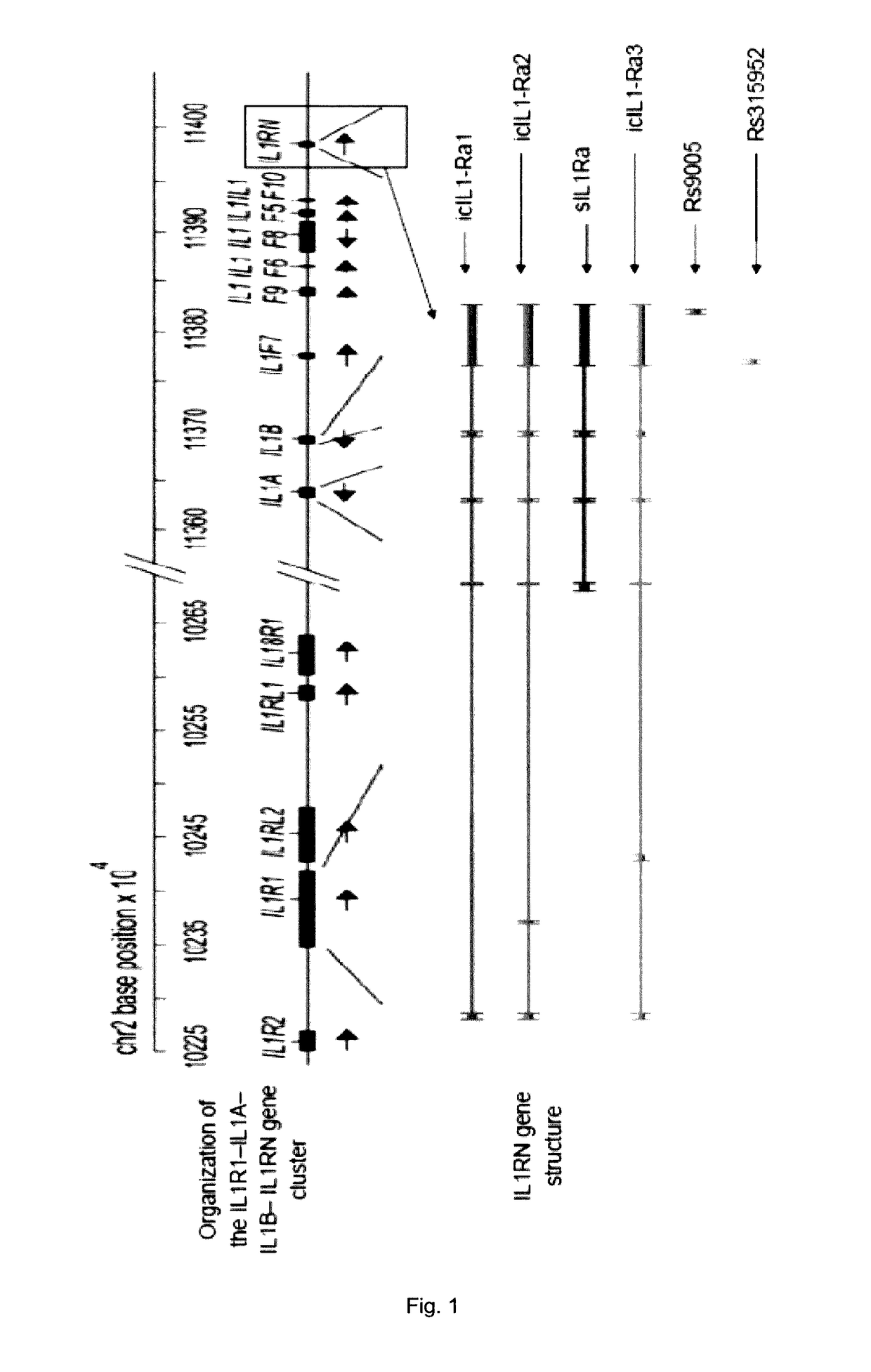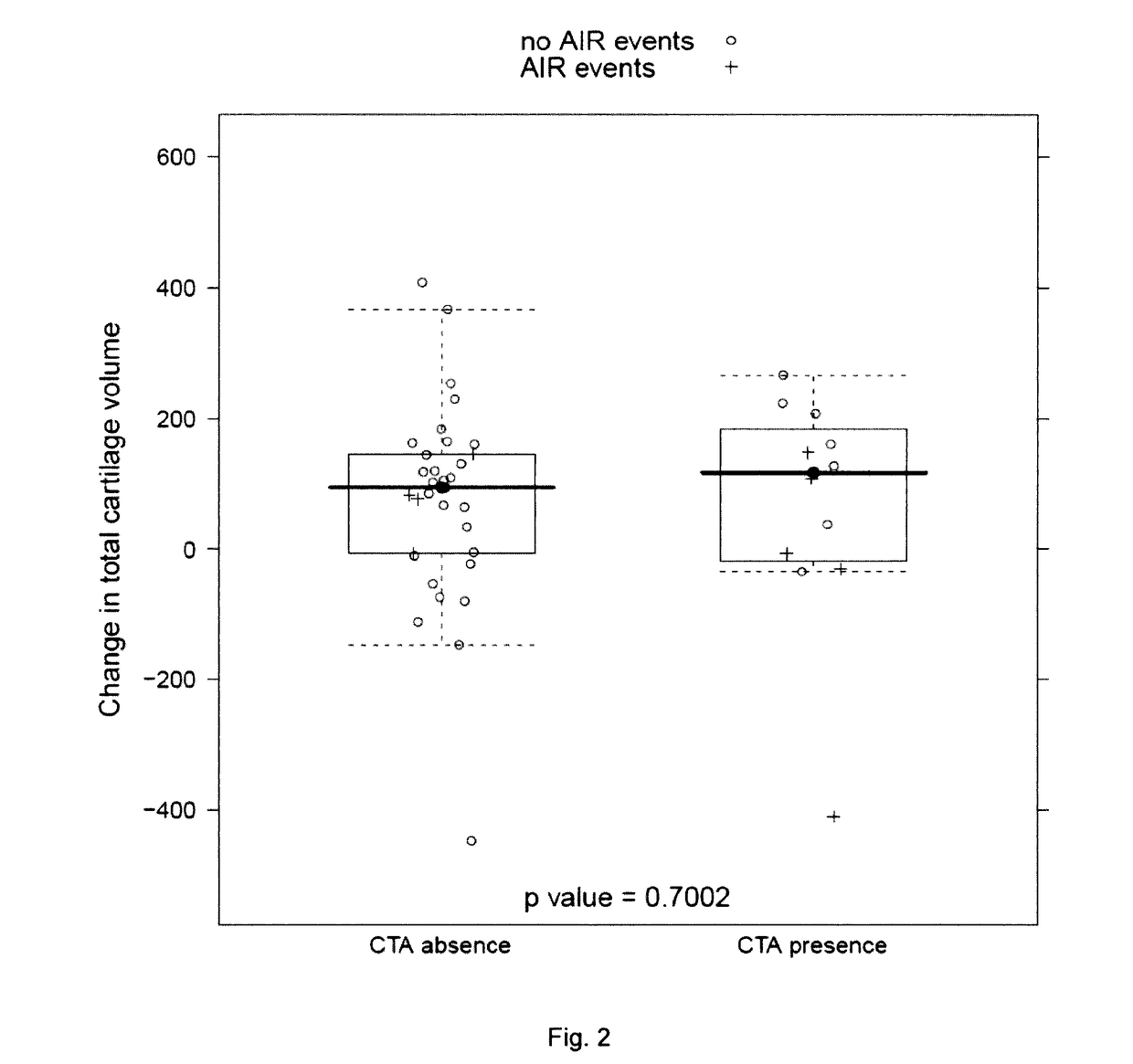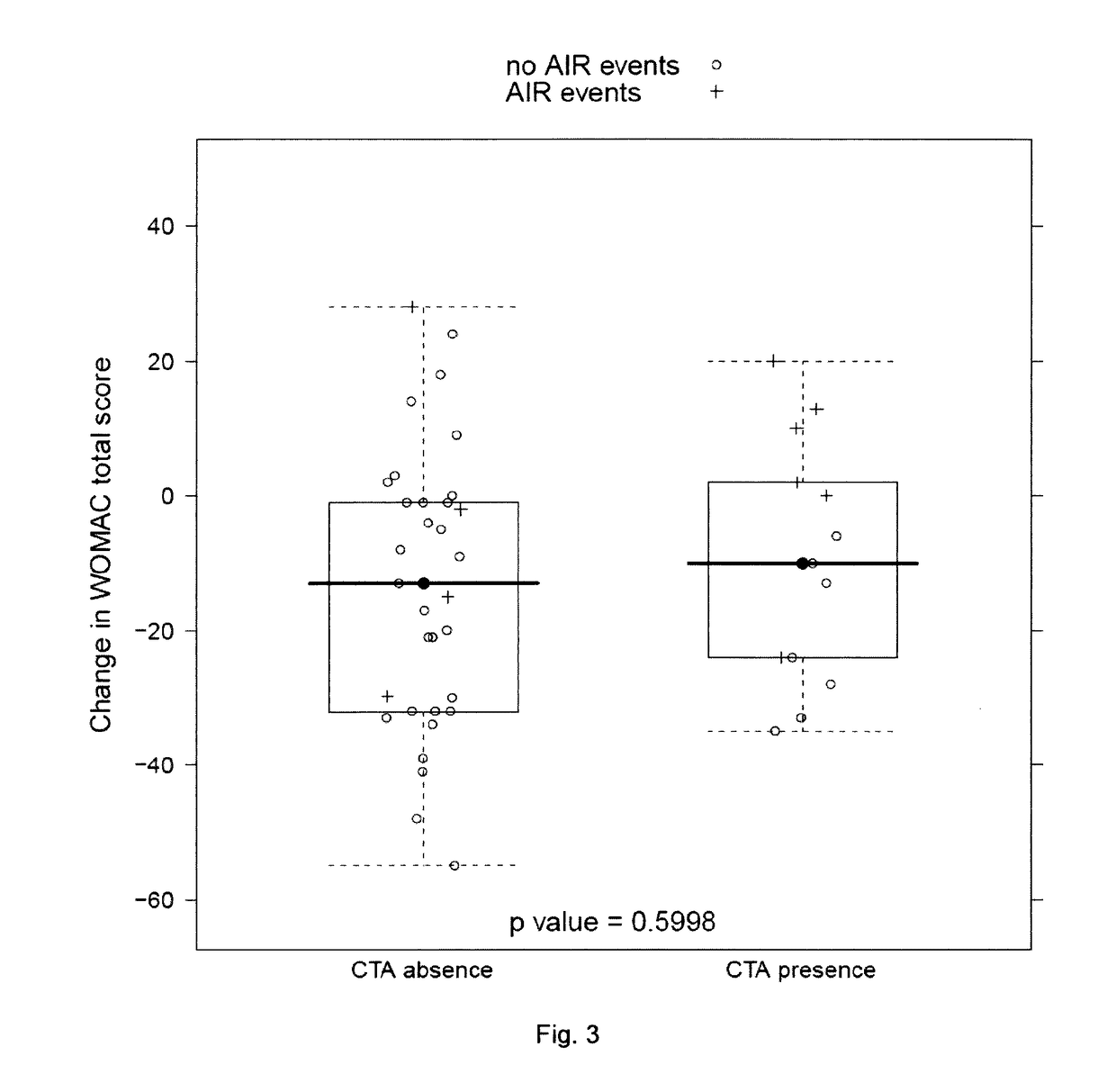Genetic markers for predicting responsiveness to FPG-18 compound
a gene marker and responsiveness technology, applied in the field of pharmacogenetics, can solve the problems of limited ability of mature cartilage to repair itself, low oxygen pressure, low nutrification of cartilage, etc., and achieve the effect of reducing the dose of fgf-18 compound to be administered
- Summary
- Abstract
- Description
- Claims
- Application Information
AI Technical Summary
Benefits of technology
Problems solved by technology
Method used
Image
Examples
examples
1. Genotyping Background:
[0173]The level of cartilage volume growth and the associated risks of adverse events in response to sprifermin treatment in cartilage disorders, such as osteoarthritis, cartilage injury, fractures affecting joint cartilage or surgical procedures with impact on joint cartilage (e.g., microfracture), may each be associated with a specific genetic variation in one or several genes. In the present study, the search for associations between genes containing variations and disease or response to treatment was focused on candidate genes that were selected based on the physiological role of the proteins they encode and their potential implication in the cartilage disorders, or in the response to sprifermin treatment. The list of selected candidate SNPs that have been tested is given in Table 1.
[0174]Response to sprifermin treatment was measured by change in cartilage volume from baseline 1 year after the beginning of treatment with sprifermin.
[0175]It is noted that...
PUM
| Property | Measurement | Unit |
|---|---|---|
| time | aaaaa | aaaaa |
| volume | aaaaa | aaaaa |
| volume | aaaaa | aaaaa |
Abstract
Description
Claims
Application Information
 Login to View More
Login to View More - R&D
- Intellectual Property
- Life Sciences
- Materials
- Tech Scout
- Unparalleled Data Quality
- Higher Quality Content
- 60% Fewer Hallucinations
Browse by: Latest US Patents, China's latest patents, Technical Efficacy Thesaurus, Application Domain, Technology Topic, Popular Technical Reports.
© 2025 PatSnap. All rights reserved.Legal|Privacy policy|Modern Slavery Act Transparency Statement|Sitemap|About US| Contact US: help@patsnap.com



